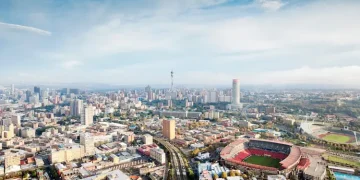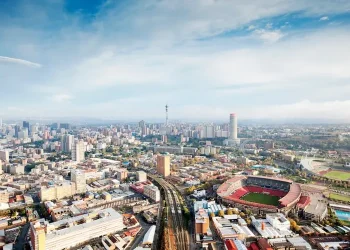South Africa holds immense promise in its offshore gas reserves, capable of transforming its economy much like Guyana’s oil boom or Suriname’s growing energy market. Yet, realizing this potential for gas development depends on bold leadership, fair gas pricing, and collaboration across industries and communities.
By NJ Ayuk, Executive Chairman, African Energy Chamber (https://EnergyChamber.org/)
The Untapped Promise of South Africa’s Gas Reserves
The South Africa natural gas reserves discovered at the Luiperd-Brulpadda gas-condensate project off the southern coast are estimated at 3.4 trillion cubic feet of gas and 192 million barrels of condensate. These figures represent thousands of potential jobs and renewed growth in regions such as Mossel Bay, where the PetroSA gas-to-liquids (GTL) refinery once thrived.
However, TotalEnergies’ exit from the project in 2024 revealed the critical challenges holding back progress — environmental legal battles, pricing disputes, and policy uncertainty.
Why a Gas-to-Liquids Strategy Matters
A practical GTL approach could unlock the potential for gas development while aligning with renewable energy South Africa goals. By linking gas prices to international LNG spot markets and strengthening community partnerships, South Africa could create a balanced framework that satisfies upstream investors, downstream users, and local communities.
Reviving the Mossel Bay GTL facility to convert natural gas into diesel and kerosene would help South Africa reduce its dependence on fuel imports, enhance energy security, and create new employment opportunities.
The Pricing Dilemma
TotalEnergies’ departure stemmed largely from disagreements over currency-based contracts. While foreign investors prefer dollar-denominated payments, the South African government favors rand-based pricing to protect local consumers. A fair solution would be to peg gas prices to global LNG rates, with discounts reflecting savings from local production and reduced transport costs.
This formula would attract international investors while ensuring affordable energy for domestic power producers. It would also strengthen the country’s position in the renewable energy South Africa transition.
Overcoming Environmental and Legal Challenges
To advance these projects, South Africa must also address environmental resistance. Transparent communication and early community engagement are key. The Petroleum Agency SA’s awareness campaigns show promise — they educate communities on both the benefits and risks of gas exploration.
Moreover, implementing a streamlined, time-bound environmental impact assessment (EIA) process can prevent unnecessary delays and repetitive court challenges. Highlighting the lower carbon footprint of GTL technology can further win public support.
Building a Collaborative Future
A unified task force involving government, industry leaders, and local representatives could drive progress in south africa natural gas reserves development. By reviving existing infrastructure like the Mossel Bay GTL plant and aligning policies with international market standards, South Africa can balance industrial growth with environmental responsibility.
The potential for gas development goes beyond energy — it’s an opportunity for inclusive economic reform. If President Cyril Ramaphosa’s administration prioritizes gas as a bridge fuel alongside renewables, the country could reduce import dependency, expand industrial jobs, and strengthen its long-term sustainability.
With decisive leadership and a clear gas pricing model, South Africa can transform its vast natural gas reserves into an engine for growth and global competitiveness.
Explore more energy stories and travel opportunities in Africa here.
This story was first reported by APO Group. Read the full article here.



























